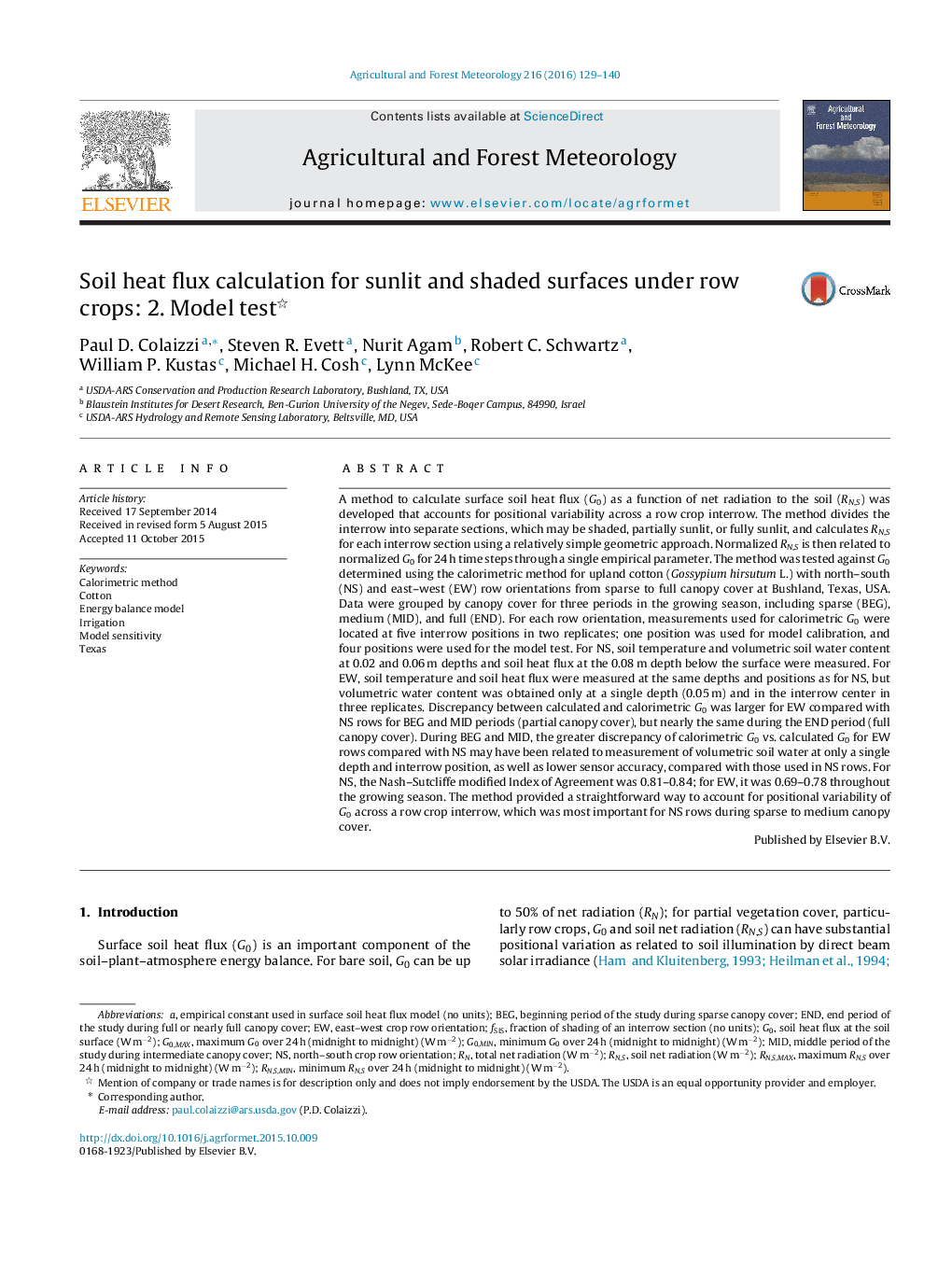| کد مقاله | کد نشریه | سال انتشار | مقاله انگلیسی | نسخه تمام متن |
|---|---|---|---|---|
| 6537114 | 158318 | 2016 | 12 صفحه PDF | دانلود رایگان |
عنوان انگلیسی مقاله ISI
Soil heat flux calculation for sunlit and shaded surfaces under row crops: 2. Model test
ترجمه فارسی عنوان
محاسبه شار حرارتی خاک برای سطوح خورشیدی و سایه دار تحت محصولات ردیف: 2. تست مدل
دانلود مقاله + سفارش ترجمه
دانلود مقاله ISI انگلیسی
رایگان برای ایرانیان
کلمات کلیدی
موضوعات مرتبط
مهندسی و علوم پایه
علوم زمین و سیارات
علم هواشناسی
چکیده انگلیسی
A method to calculate surface soil heat flux (G0) as a function of net radiation to the soil (RN,S) was developed that accounts for positional variability across a row crop interrow. The method divides the interrow into separate sections, which may be shaded, partially sunlit, or fully sunlit, and calculates RN,S for each interrow section using a relatively simple geometric approach. Normalized RN,S is then related to normalized G0 for 24Â h time steps through a single empirical parameter. The method was tested against G0 determined using the calorimetric method for upland cotton (Gossypium hirsutum L.) with north-south (NS) and east-west (EW) row orientations from sparse to full canopy cover at Bushland, Texas, USA. Data were grouped by canopy cover for three periods in the growing season, including sparse (BEG), medium (MID), and full (END). For each row orientation, measurements used for calorimetric G0 were located at five interrow positions in two replicates; one position was used for model calibration, and four positions were used for the model test. For NS, soil temperature and volumetric soil water content at 0.02 and 0.06Â m depths and soil heat flux at the 0.08Â m depth below the surface were measured. For EW, soil temperature and soil heat flux were measured at the same depths and positions as for NS, but volumetric water content was obtained only at a single depth (0.05Â m) and in the interrow center in three replicates. Discrepancy between calculated and calorimetric G0 was larger for EW compared with NS rows for BEG and MID periods (partial canopy cover), but nearly the same during the END period (full canopy cover). During BEG and MID, the greater discrepancy of calorimetric G0 vs. calculated G0 for EW rows compared with NS may have been related to measurement of volumetric soil water at only a single depth and interrow position, as well as lower sensor accuracy, compared with those used in NS rows. For NS, the Nash-Sutcliffe modified Index of Agreement was 0.81-0.84; for EW, it was 0.69-0.78 throughout the growing season. The method provided a straightforward way to account for positional variability of G0 across a row crop interrow, which was most important for NS rows during sparse to medium canopy cover.
ناشر
Database: Elsevier - ScienceDirect (ساینس دایرکت)
Journal: Agricultural and Forest Meteorology - Volume 216, 15 January 2016, Pages 129-140
Journal: Agricultural and Forest Meteorology - Volume 216, 15 January 2016, Pages 129-140
نویسندگان
Paul D. Colaizzi, Steven R. Evett, Nurit Agam, Robert C. Schwartz, William P. Kustas, Michael H. Cosh, Lynn McKee,
